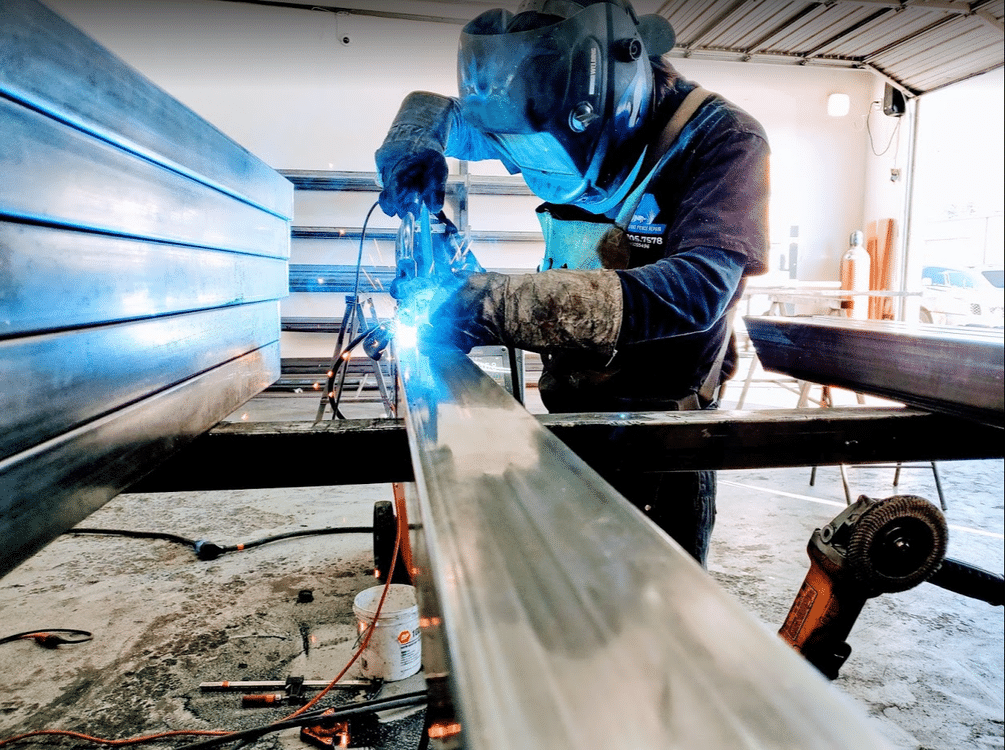Comprehensive Welding Inspection Service for Industrial Projects
Unlocking the Secret Sorts Of Welding Solutions for Your Projects
In today's landscape of diverse welding services, recognizing the nuances and applications of various welding techniques is extremely important for effective project implementation - Welding Inspection Service. By unraveling the key kinds of welding services available, one can browse the complexities of selecting the most suitable method to ensure accuracy, efficiency, and quality in welding jobs.
Typical Welding Strategies
A number of frequently made use of welding strategies play important functions in various industrial industries. One of the most commonly made use of methods is Gas Metal Arc Welding (GMAW), additionally understood as MIG welding.
An additional preferred welding method is Gas Tungsten Arc Welding (GTAW), commonly referred to as TIG welding. TIG welding uses a non-consumable tungsten electrode to create the weld and requires a different filler material. This method is preferred for its precision, control, and capability to produce high-quality welds on thin products.
Shielded Metal Arc Welding (SMAW), or stick welding, is one more vital method where a flux-coated electrode is utilized to create the weld. SMAW is known for its simplicity, adaptability, and viability for on-site and outside welding applications. These common welding strategies are crucial for making frameworks, equipment, and numerous tools across markets.
Advanced Welding Procedures
Advanced welding processes incorporate cutting-edge methods that press the limits of typical welding approaches in regards to precision, adaptability, and effectiveness. One such procedure is laser light beam welding, which makes use of a focused beam of light to sign up with metals with very little heat-affected zones, making it suitable for delicate or high-precision jobs. In addition, electron light beam welding employs a high-velocity electron light beam to create deep welds in thick materials, offering extraordinary strength and top quality.
Moreover, rubbing stir welding is a solid-state joining procedure that uses a revolving device to create frictional warm, bonding products without melting them. This technique is especially valuable for joining light-weight alloys with superior mechanical residential properties. One more innovative method is ultrasonic welding, where high-frequency ultrasonic vibrations are used to produce solid-state welds in plastics, metals, and other products, using clean and rapid joining solutions.
These advanced welding procedures accommodate a diverse array of commercial needs, offering reliable, high-quality, and specific remedies for different tasks, from aerospace parts to auto components and past.
Specialized Welding Applications

Automated Welding Solutions
In modern industrial setups, the application of automated welding options has actually revolutionized manufacturing processes by improving efficiency and accuracy. Automated welding systems utilize innovative technologies such as robotics, computer numerical control (CNC), and expert system to carry out welding tasks with very little human treatment (Welding Inspection Service). These systems provide many benefits, including boosted productivity, boosted More about the author weld quality, and reduced manufacturing expenses
One key benefit of automated welding solutions is their capability to consistently generate top quality welds, resulting in boosted overall item top quality. In addition, these systems can operate constantly, 24/7, without the demand for breaks, resulting in higher outcome degrees and faster task conclusion times. By using automated welding solutions, business can additionally More Help minimize the threats connected with human mistake, ensuring greater accuracy and repeatability in the welding procedure.
Furthermore, automated welding services are adaptable and very flexible to various welding applications, from detailed elements to large-scale frameworks. Whether in automotive production, aerospace sectors, or building and construction projects, the assimilation of automated welding systems offers an one-upmanship by enhancing operations and delivering remarkable welding results.
Ingenious Welding Technologies
The development of automated welding options has actually led the way for the integration and development of ingenious welding technologies in modern-day industrial applications. One such cutting-edge modern technology is laser beam of light welding, which uses an extremely focused beam of light to sign up with steel parts with accuracy and efficiency. This method is especially valuable for jobs needing intricate welds on products with high melting factors or for applications where minimal heat-affected areas are important.
Another innovative welding modern technology acquiring appeal is friction mix welding (FSW), a solid-state signing up with procedure that creates high-strength bonds by producing frictional heat between 2 pieces of steel. FSW is widely utilized in industries such as aerospace and auto for its capacity to produce welds with premium mechanical properties and improved structural integrity.
Additionally, electron light beam welding (EBW) is an advanced method that makes use of a light read the article beam of high-velocity electrons to create precise, deep welds in metal components. This innovation is favored for its ability to weld different metals and materials with differing thicknesses efficiently. As industries remain to require higher quality and efficiency in welding processes, these ingenious innovations are positioned to play a considerable function in forming the future of industrial welding applications.

Conclusion
To conclude, comprehending the key kinds of welding solutions is necessary for effectively finishing a selection of projects. From common welding methods to sophisticated processes, specialized applications, automated services, and cutting-edge modern technologies, each technique offers distinct advantages and applications. By acquainting yourself with these various welding options, you can choose one of the most ideal technique for your details job demands and accomplish top notch outcomes.
In today's landscape of diverse welding services, comprehending the subtleties and applications of numerous welding methods is critical for effective job execution. By unraveling the key types of welding services readily available, one can browse the details of selecting the most appropriate technique to ensure precision, efficiency, and top quality in welding jobs. As we begin on this exploration of welding solutions, a deeper understanding into the world of welding waits for, promising understandings that can boost the end results of your projects.
